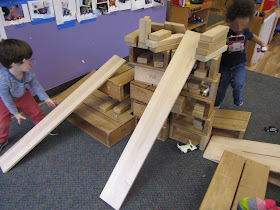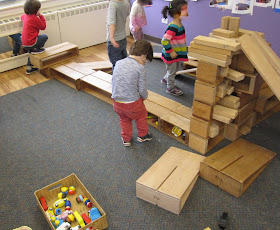“If all I did was solve problems all day, I wouldn’t
get anything done.”
“Children need to learn to solve their own problems.”
“My job is to teach, not solve everyone’s problems for
them.”
Comments like these come up quite often in conversations
about classroom management and children’s behavior. When I hear comments like
this, my first reaction is usually to say that, actually, solving problems is
our job. Fostering social-emotional competence and supporting children as they
learn to negotiate the social world is at the heart of teaching. But there’s
something more.
Why are there so many problems in the first place?
“Behavior problems” are often less about a child’s
actual behavior, and more about the teacher’s perception of and reaction to it.
Sometimes what defines the behavior as a problem isn’t how it makes the child
feel, but how it makes the teacher feel. And sometimes, these behaviors don’t
originate in the child, but in the child’s response to something a teacher said
or did, or a situation that the teacher created.

Several years ago, a teacher approached me for help
with a classroom management problem. Every day at free play, the same group of children
were fighting over the toy police car. No matter how much she talked to them or
what consequences she gave them, they still yelled at each other and grabbed
the car out of each others’ hands. What should she do? My suggestion – get more
police cars. Obviously the police car was a very popular play choice. By
choosing to have only one of a highly desired toy in the room, the teacher was unintentionally
creating the problem that occurred. And the teacher was the one with the power
to solve it.
When we set up the environment and decide how to approach
and respond to children, we are the ones
choosing whether there will be problems. And when problems occur, we are the ones who have the power to change
the situation.
When a child exhibits a behavior that’s a “problem” or
expresses to the teacher that they’re having a “problem” with another child,
the first step is to determine whether there’s something in the classroom environment
or routine that the teacher could change. There might not be – but if there is
a chance that one small change could better support that child, meet that child
where they are developmentally, or make the day easier for everyone, then it’s
worth a try.
Some things to consider:
1. Are
there enough materials for several children to use them at the same time, or to
play easily together in a small group?
2. Are
there a variety of engaging activities available so children can choose something
else they’d enjoy doing while waiting for a turn for a preferred activity?
3. Do
children have the ability to choose whether they want to participate in an
activity, or to decline to do something that a teacher asks them to?
4. Does
the teacher have reasonable, developmentally appropriate expectations for children’s
behavior, including children’s ability to share, wait, take turns, and verbally
express their thoughts and feelings?
And most of all:
5. When
a situation isn’t working well, what can I change to make it work better?
That last one is sometimes the hardest for teachers to
consider. We get so caught up in “I want the children to….” and “I expect the
children to be able to…..” that we forget that the children aren’t here to do
what we want or what we expect. We can want and expect all sorts of things, but
in the end we need to meet the children where the children are right now. No
amount of adult expectations are going to change children’s behavior. The
process of social and emotional development takes a long time and a lot of
practice. And while the children are developing these skills, we need to give
them all the support that they need.
Instead of only asking the child “What could you do
differently next time?” the teacher should also ask themselves “What could I do
differently so there isn’t a next time?” We can’t change the children, but we might
have the power to change what’s causing the problem in the first place. Which
will leave us all with fewer problems for anyone to have to solve.









